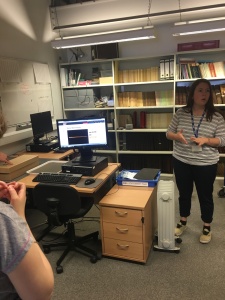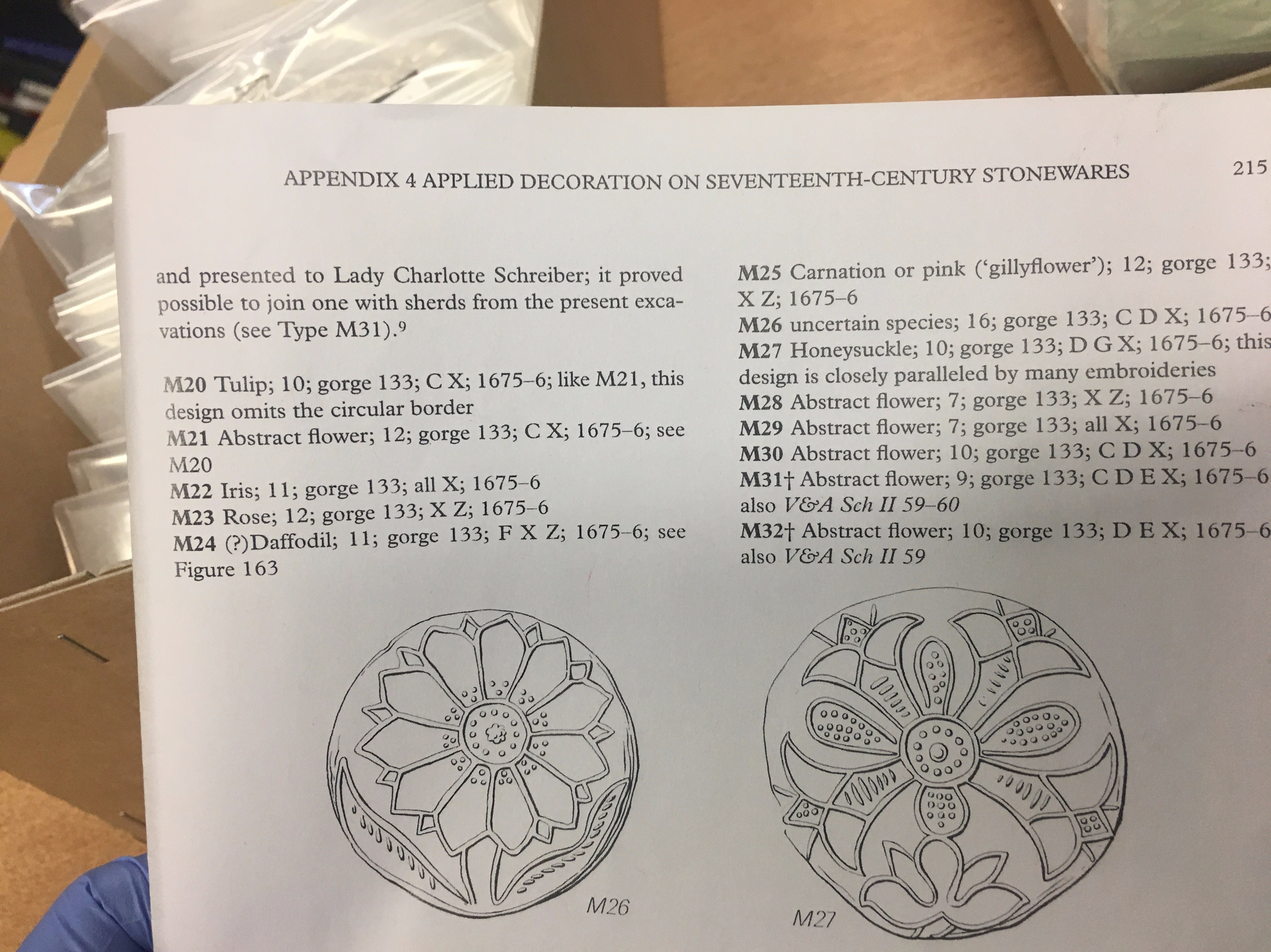
Lucy explains what we will be doing and why
I have written a lot in the last few weeks about thoughts and feelings. This is all well and good but sometimes you need to focus on the work too! As I have mentioned at the start of these blogs (and no doubt will do again) this volunteer inclusion project is carrying out ‘real work’. We are making material in the archive more accessible and improving storage conditions. We are focussing on the 17th century archaeology excavated at Fulham Pottery and we have mainly been dealing with the medallions that decorate drinking vessels or gorges.
In the first two weeks alone Team Caspa, along with another team volunteering on a Tuesday, have worked through 17 boxes of material and repacked 600 medallions. In the previous weeks we have re-bagged these medallions and added new labels with basic information including object number, site codes, context and material type.

We are adding data about the medallions and year of production from the site publication.
We have also re-visited those labels, cross referencing details to the site publication which has allowed us to add medallion numbers and the year of production. Week 5 has seen the team learning valuable computer skills working on an Excel spreadsheets. We have added the data we already have and included new data that will be of value to future researchers including the size and weight of fragments and the pages in the documentation that they refer to.
This information will eventually be transferred to the museum database and will be added to the collections online along with photographs of the fragments. Team Caspa seem a dab hand at adding details and spotting any errors, and working in pairs is also allowing us to improve our collaboration skills.
In the afternoon we start looking ahead to the public engagement aspects of the work that will be the culmination of all the weeks of handling 17th century pottery and learning new skills and facts. It seems appropriate to publish this blog on the first London History Day as we have been learning about Fulham, an area of London I know little about.

Ready for a little quiz?
The Fulham Pottery was founded by John Dwight (1633-1703) in 1672, he was the first potter to make stoneware production commercially successful in England. The Fulham site was worked through to the 1980s and the material we are working on was excavated from 1971-9 before the area was developed for office buildings.

Original excavation photography
There is evidence that Dwight was experimenting with different techniques to achieve the stoneware and it has been fantastic to see some examples of his work along with documentation that has allowed us to see the site and the excavation in action.

One of the group thinks this looks like a ‘fidget spinner’!
The thought of public engagement can be quite daunting so taking some time to think about what we have learnt so far is really helping to lay the ground work for coming weeks. As we discuss items laid out in front of us I jot down comments and compile a list of 21 facts and nuggets of information that the team have already learnt. It is amazing to think that in only a few short weeks we have gained so much knowledge.
But as I talk to the group, work more closely with them and learn more about them, I think they have learnt so much more than facts and figures about Fulham. More of our group are travelling independently up to the archive, they are working well in teams, communicating and having fun in a new environment. I am so proud of all they have achieved so far. It is a joy to see how keen they are, arriving early each week to get stuck into another day of London history.
xxxxxxxxxxxxxxxxxx
To read more about this project you can find blogs here – https://tinctureofmuseum.wordpress.com/?s=teamcaspa
Or follow #TeamCASPA on Twitter









